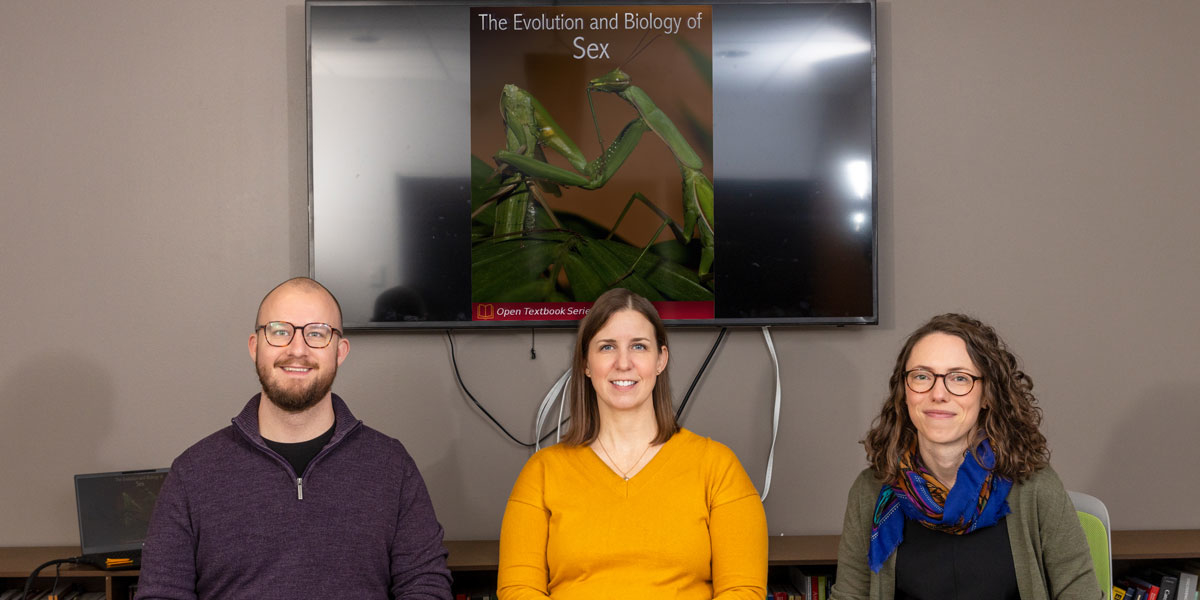
A lot has changed in the discourse around sex and gender since the first edition of The Evolution and Biology of Sex came out in 2011. In recent years, people in the LGBTQ community have helped raise awareness of the diversity in sexual orientation and gender identity in humans. However, biology courses have lagged behind, sticking to an outdated binary and conflating sex and gender. That's changing.
Last summer, a small team led by Biology Teaching and Learning faculty members Katherine Furniss and Sarah Hammarlund set out to update the narrative in their popular Evolution and Biology of Sex course, which attracts hundreds of students each semester. They tapped then-undergraduate and former teaching assistant Evan Nickchen to develop content and Micah Gjeltema, the open education and affordable content librarian at U of M Libraries, to provide technical expertise. The second edition of the online textbook was released this fall.
Students in the popular Biology 1003 course of the same name were given access free of charge. In fact, anyone interested in the topic can peruse the book and even borrow from it. Feedback from students has been resoundingly positive. Many note the quality of the content itself and the open-access ethos resonates with students navigating the high cost of education.
“Having cost-free, open-access course materials has made me feel more included and more inclined to use them because I know that the professors and teaching assistants want to include everyone in the learning experience,” one student said. Others noted the convenience of an online textbook and the ability to engage with the text. "It was also extremely interactive, which I love.”
Furniss and Hammarlund started teaching the course in 2022 and quickly realized the text could use a refresh. “The research, the language and the way that we approach things has changed,” says Furniss. “We wanted to make sure that we were being biologically accurate and representing the diversity of variation across species and within species.” The instructors also saw the need to reflect the shift in how we talk about gender identity.
Furniss points to research relating to sexual selection as an example of how things have evolved. “Within biology education, momentum has been building around providing a greater diversity of examples, many of which have been ignored or disregarded as anomalies because they are less common. Many of these examples also happen to challenge stereotypes about male and female roles.”
“In the class itself, we realized there was a discrepancy between what the textbook was saying about sex and gender, and what we were saying about sex and gender,” says Nickchen, who developed a new chapter on mating systems, a topic absent from the first edition. “We were able to draw on what we heard from students and I was able to draw on my own experience being non-binary and closer to their age to really make the distinction that sex is biological, and gender is social. We can separate them.”
Gjeltema worked with the team to turn the content into a resource for all, providing the expertise needed to ensure the textbook met accessibility standards and contained primarily openly licensed images and graphics. He was able to dedicate time to the project with the help of a Partnership for Affordable Learning Materials grant from the U Libraries.
“Open Education is about removing barriers to the learning process and removing as many restrictions on learning materials as we can,” says Gjeltema. “The more accessible and open we can make the materials, the better we can facilitate learning.” — Stephanie Xenos